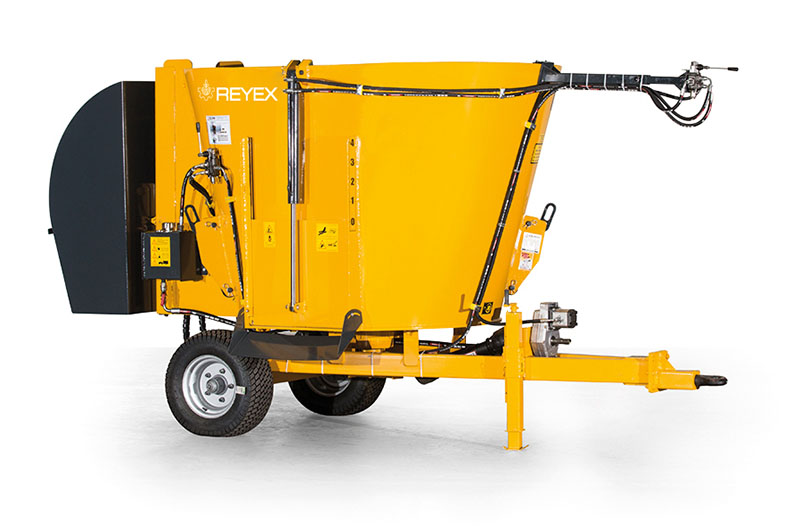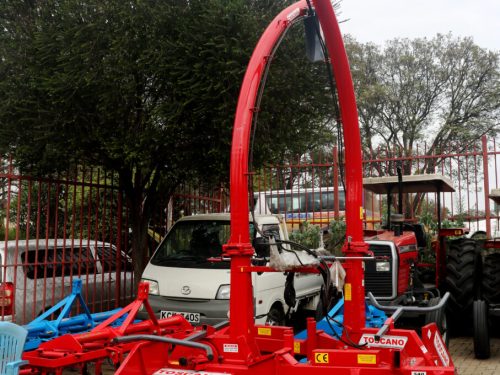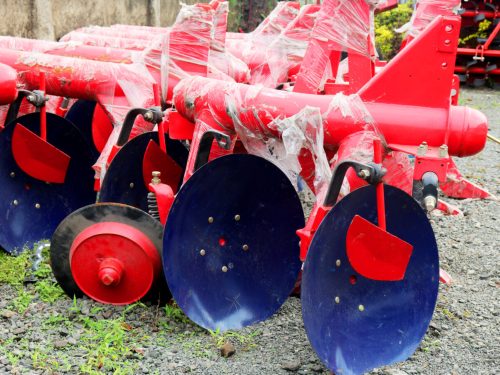Description
FEED MIXER FOR SALE IN KENYA.
Feed mixer machine mixes animal feed ingredients and premixes that can suit the user’s nutritional objective. The main purpose is to produce a homogenous mix in the feed production process, with efficient mixing being the key to good feed production.
If feed is not properly mixed, ingredients and nutrients will not be properly distributed when it comes time to extrude and pelletize the feed, or if the feed is to be used as mash, thus making the feed not have nutritional benefit to the animals consuming it.
Therefore, the machinery helps in creating properly mixed rations for your livestock with the right balance of energy, protein, and other nutrients. Remember that the nutrients that you mix utilizing an animal feed mixer machine will keep your livestock strong and healthy, which is every farmer’s desire.
Importance of animal feed mixers.
- Feed mixers are used in food industry, coatings, dry powders, chemicals industry, etc. to mix various dry powder measurements in proportion.
- The horizontal feed mixer has high mixing uniformity and low residual amount, and is suitable for mixing two or more materials and additives.
- Animal feed are mix thoroughly with a mixer to attain a balanced nutrients supply leading to balanced feed
Types of animal feed mixers sold in Kenya.
- Horizontal feed mixers.
Horizontal feed mixers consist of a horizontal tub that contains a shaft through the center, that is driven by a flywheel connected to a drive motor via a chain or belt drive. Moreover, they are fitted with counter-rotating augers that are perfect for shredding hay bales and mixing feed sources.
They are perfect for farms requiring high output production of animal feeds. The mixer can possess more than three augers appropriate for mixing large proportions of feed in a short time. The machinery is also preferred because of its efficiency in mixing molasses.
The horizontal feed mixer is perfect for a large-scale set-up. Hence, if you are searching for an animal feed mixer in Kenya for your massive farm with a big herd of cattle, better procure a horizontal one. You can get yours customized to meet custom production needs. This machinery has a capacity of between 250 and 2,000kg/hr.
Parts of horizontal feed mixer.
-
The base support frame
The base support hold the system components of the machine by ensuring better machine stability. It is made of strong cast iron steel that cannot wear or crack easily and has long lasting solution.
-
Feed mixer material box
The material box is one of the main accessories of the small feed mixer. The inner wall of the material box is designed with a certain inclination angle, which makes it difficult for the internal components to to adhere to the inner wall of the material box during the mixing flow of the material box body, thus ensuring the consistency of the mixed material.
-
Feed mixer auger and spiral blades
The material box is one of the main accessories of the small feed mixer. Whether the structure design of material box is reasonable directly affects the density and uniformity of feed mixture. The inner wall of the material box is designed with a certain inclination Angle, which makes it difficult for the material to adhere to the inner wall of the material box during the mixing flow of the material box body, thus ensuring the consistency of the mixed material.
-
Power system
The horizontal feed mixer operates at a larger power range. The machine is equipped with a power system of 1.5-15 kW depending on the output. The output capacity of the small feed mixer can reach 600-4000 kg/h.
-
Discharge channel
The discharge channel is composed of hydraulic cylinder, fixed support, connected support and sliding discharge baffle. The discharging sliding baffle is installed on the reciprocating motion axle of the hydraulic cylinder. The discharging baffle can be opened or closed at will through the control valve. The control of the feed output can be realized by the size of the opening of the material inlet.
Working principles of horizontal feed mixer.
The feed materials enter the material box of the horizontal feed mixer. The motor starts and the auger drives the blades to start rotating at a certain angle. As it rotates it stir the materials in a radial cycle along the axial direction, hence making the materials mix evenly and quickly. The rotation speed of the auger driven by the motor of the feed mixer and the structure of the blade will reduce the gravity of the materials. The intense stirring movement shortens the time of a feed mixing which is faster and more efficient.
Design Features of horizontal feed mixer.
- Applies to mix various powdering materials with fluids to make pellets.
- Size and density of particle does not affect mixed results.
- Horizontal mixing process reduces destruction of fragile materials.
- Materials are fully mixed uniformly for better nutritional value.
- Overall structure is more reasonable with beautiful appearance.
- Easy to operate and maintain.
- The machine has smaller area coverage, resistant to wear, low energy consumption and long life span.
- The gear transmission is reliable, long service life, compact structure, and high transmission efficiency.
- The transmission mode of chain transmission will not cause slippage, the transmission size is relatively compact, the tension is small, and the transmission efficiency is high.
- The belt drive device can reduce load impact, run smoothly, without noise, and requires low precision in manufacturing and installation.
- Suitable for fine mixing up to 99.5% of medium to coarse dry materials of less than 15% low moisture content.
- The Horizontal Mixer uses motor with geared function coupled direct or with gearing function obtained through chain drive.
- This mixer is very efficient even with the presence of fats and molasses
- Low power consumption is a special feature.
- Available in capacities of 500 Kg, to 2000 Kg.
- Larger units are available on order up to 10,000 Kg/hr.
Vertical feed Mixer.

Vertical mixers consist of a vertical mixing tub. It has mixing vertical screws that lift the feed from the bottom to the top of the mixer. The mixing action is effective and is capable of producing a homogeneous mix.
They are mostly common type available in small livestock feed mills. Though, the vertical type is less well suited to aquaculture, poultry and fish feeds than the horizontal type, which are much more efficient in blending in small quantities of liquids or in mixing ingredients with different particle sizes.
These mixers are smaller and utilize less great energy to operate, perfect for a medium-sized farming enterprise, and they are easily transported at the back of a pick-up or truck. Furthermore, vertical feed mixers are designed with one or two augers, making them sufficient for mixing animal feeds. Moreover, Vertical mixer has compact structure, small floor space, low power consumption and low dust emission.
Features of vertical feed mixer.
- Vertical feed mixer has simple structure, compact layout and small floor area.
- All parts of the vertical feed mixer are fixed to the frame. The frame is welded with high quality carbon steel plate to ensure the stability of the machine operation.
- Materials can be fully mixed, thus greatly reducing the residual amount of materials.
- Can easily handle large bundles of feed material especially round or square bales.
- Feed mixed with the vertical feed mixer is soft and not easy to agglomerate
- The vertical feed mixer has little damage to the feed fiber structure. The integrity of feed fiber structure can maintain the nutritional content of feed for longer time.
- Open-type vertical mixers with one or more serrated auger blades are very suitable for fodder like Napier, Lucerne, hay, etc. mixing with primary ingredients.
- Majority have a capability of processing feed from 250kg/hr. to 2,000kg/hr. which is an incredible capacity for domestic and commercial settings.
- Suitable for fine mixing up to 90% of medium to coarse dry materials.
- The breather helps to prevent overloading in automated situations.
- Vertical mixer uses a belt and pulley drive thus reducing the power consumption
- This design allows for long maintenance intervals and is easy to operate.
- It is available in capacities of to 2000 Kg.
- Larger units are available on order up to 10,000 Kg/hr.
- Not suitable for mixing wet ingredients.
-
Working principle of vertical feed mixer.
The working principle of the vertical feed mixer is that the internal screw and the blade lift the material at the bottom of the barrel to the top by rotating. Then throw it from the top of the barrel and return it to the bottom. In this reciprocating cycle, the raw materials are tumbling up and down in the vertical feed mixer, and a large amount of raw materials can be uniformly mixed in a short time.
Important points to note when operating a feed mixer.
-
The choice of raw material sizes
The various additives addition should be very fine, thinner with small particle size and density. Suitable diluents raw materials include commonly used feed ingredients such as soy flour, wheat flour, defatted rice bran and the like. Generally, materials with fine particle size, no dust, and affinity for the active ingredients in the additives are good for diluents or carriers..
-
Reduce the storage or transportation process of premix after mixing
It is best to pack the mixed materials directly into bags to avoid or minimize the transportation and drop of the mixed materials. Screw conveyors or bucket elevators should be less as possible. The height of the silo should not be too high to reduce or eliminate separation or classification of mixtures. For each batch of mixtures, it must be clearly identifiable, and the packaging bags must be clearly marked. It is best to use colored symbols or labels to distinguish them.
-
Suitable loading capacity
Too much feed material makes the mixer to be strain a lot. Moreover, it will affect the mixing process of the materials in the machine, which will cause the mixing quality to decrease.
Very small size material makes the mixing inappropriate. The efficiency of the mixing machine will also affect the mixing quality.
Therefore, no matter what kind of mixer, the filling degree of the material is very essential, so as to ensure the normal operation of the high quality horizontal feed mixer and make the mixed feed meet the quality requirements.
-
Correct mixing time
The determination of mixing time is very important for mixing quality since short mixing affects the feed quality
Very long mixing time can affect the quality and can Increase in consumption. The determination of mixing time depends on the mixing speed of the mixer and size of raw materials.
- Frequently inspect and repair the drum feed powder mixer
As far as the horizontal mixer is concerned, after a period of use, the wear, damage and deformation of the auger, and the increase of the gap between the auger and the mixer shell will greatly affect the uniformity of mixing.
In addition, the leakage of the discharge door is also one of the important factors affecting the performance of the mixer.
General maintenance practices of feed mixers.
- Do not let mixers sit loaded with feed throughout the day or overnight. This is one of the situations that can wear a mixer out.
- Always clean off any dirt and grease that may have accumulated. Dirt-laden grease can be highly abrasive, causing unnecessary wear to the drive components,
- Regular maintenance grease points on mixers generally include universal joints, driveline bearings, and door guides and linkages.
- Maintain the Seal of the mixer and agitator. There are many different types of mixer seals, and the best mixer maintenance tips for each will depend on which your machine has.
- Check the discharge gate operation all the time since dust, dirt, powder, or foreign objects can get lodged in the discharge gate, causing it not close.
- Regularly check limit switches to make sure the discharge gate is completely close or open
- Observe the discharge gate during operation to make sure it opens and closes properly. If the gate does not fully open, it can cause material to remain in the mixer. If the gate doesn’t fully close, material will leak out.
- Loading of the mixer must not exceed effective volume.
- Repair and service the mixer after every 2 days of normal running.
- After starting the mixer, check its running direction to avoid reverse turn.




